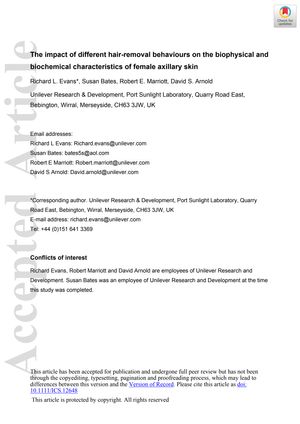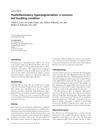The Impact of Different Hair-Removal Behaviors on the Biophysical and Biochemical Characteristics of Female Axillary Skin
July 2020
in “
International Journal of Cosmetic Science
”
shaving plucking waxing erythema skin dryness post-inflammatory hyperpigmentation skin hydration barrier integrity skin elasticity skin roughness inflammatory cytokines IL-1a IL-1RA IL-8 inflammatory response skin redness PIHP skin moisture skin barrier skin flexibility skin texture inflammation markers

TLDR All hair removal methods irritate underarm skin and cause dryness, with shaving being less irritating but more drying than plucking or waxing.
The study, involving 64 female Thai subjects, examined the impact of shaving, plucking, and waxing on the biophysical and biochemical properties of axillary skin. It found that all hair removal methods increased erythema and skin dryness, with shaving causing significantly less erythema but more dryness than plucking or waxing. No significant differences were observed in post-inflammatory hyperpigmentation or other biophysical parameters such as skin hydration, barrier integrity, elasticity, and roughness. Biochemically, levels of inflammatory cytokines IL-1a and IL-1RA increased, while IL-8 decreased after hair removal, regardless of the method used. The study concluded that a single hair removal session does not induce lasting biophysical changes or PIHP, but it does trigger an inflammatory response. It also suggested that shaving might require skincare products with more soothing actives and highlighted the need for more in-depth investigative methods beyond the surface-level buffer scrub technique used in the study.
